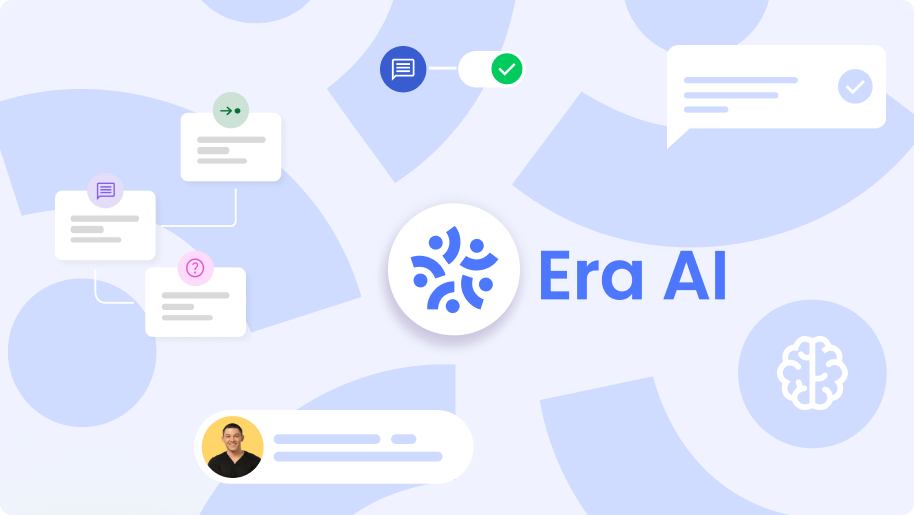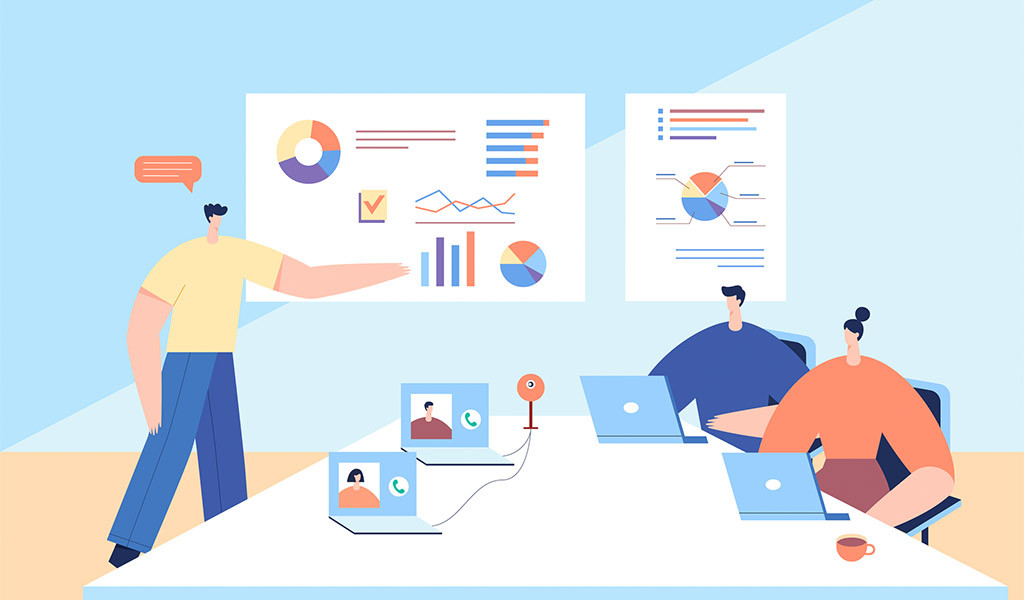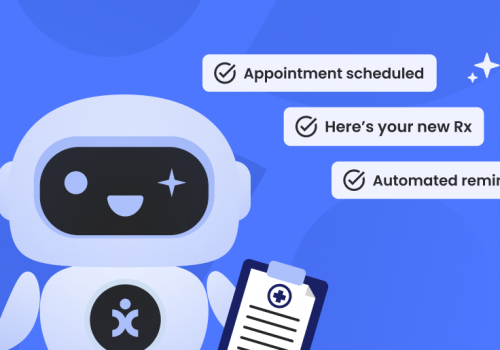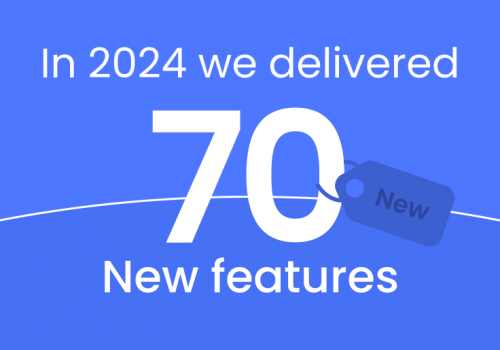When it comes to managing your customer service, it can be difficult to know which approach is best for your business. In recent years there has been mounting pressure for businesses to provide a selection of communication options for customers. All customers have preferences when it comes to communication, and businesses have realized that by denying customer’s their preference, they risk losing them to their competitors. Businesses around the world have responded to this mounting pressure by offering a range of communication channels including phone, email, webchat, social media, and SMS. However, for many businesses, this has been a slow evolution where they have implemented systems as the need for a new communication channel arose.
That is largely how the multi-channel approach has become common. Most businesses already provided customer service support in the form of phone calls, so they already had a system to support this. They then added a new system for handling social media, webchat, and so on. As these systems were implemented and focus on these areas of communication grew, new teams sprung up in the business to meet these needs. Traditional CRMs were built to handle the customer service needs of businesses at the time, but both customers and businesses are changing rapidly in the digital age.
Many businesses have now come to realize that this isn’t the most efficient approach and that they’d actually be better served by adopting an omnichannel approach. You have all the same core functionality with an omnichannel approach, but all of your channels are unified under one system. This can have a dramatic effect on providing a seamless experience to customers. Today we’re going to take a look at a traditional CRM approach and compare it to the omnichannel approach that has been gaining traction in recent years.
The Pros and Cons of a Traditional CRM System
What is a Traditional CRM System?
A traditional Customer Relationship Management (CRM) system, is a platform that a company uses to communicate with customers and store data. Put simply, it allows the business to better manage relationships and information. However, most of these traditional CRM systems are not omnichannel, but rather only capture one or a few channels of customer communication. For example, a company may use a CRM system for their call center, but handle emails from customers on a different platform. We are increasingly seeing companies move away from this form of customer interaction management and instead opt for an omnichannel approach that is better suited to providing a unified customer experience. Before we look at why businesses are now moving towards an omnichannel approach, let’s delve a little deeper into traditional CRM systems by looking at the pros and cons.
Pros of Traditional CRM Systems
- Teams are solely responsible for managing one channel and have a clear understanding of their goals and responsibilities.
- If one channel or platform goes down, then others won’t be affected. This means customers will always have a route to contact the business even with system failures.
Cons of Traditional CRM Systems
- Having siloed systems, channels, and teams can lead to an inconsistent experience for customers. Customers value having a consistent experience across all channels and it also helps boost a business’s brand integrity. According to one study, 60% of millennials expect a consistent experience from brands.
- There is often a duplication of effort when a company uses multiple customer management platforms. For example, customer details may be logged several times across different systems, which is inefficient and may result in errors.
- Some customer information may be locked away by certain teams. For example, if a company uses a CRM system for their call center, but a separate platform for email and SMS, then some crucial customer information relating to their past experience, buying history, and so on, may only be held by one team. This means other teams are potentially missing out on information that could help them to provide a better customer experience.
- In terms of technical support, it’s easier to manage one system than several. This is especially true where third-party support is concerned where you may have to wait until a dedicated expert is available to fix the problem.

The Pros of an Omnichannel Platform
What is an Omnichannel Platform?
Most companies are now opting for an omni-channel approach to customer service in which the customer can communicate with the business according to their communication preferences. With an omnichannel customer service platform, all of these customer-interactions are handled within a single system, resulting in a seamless experience for both customers and employees. Let’s take a look at the pros of an omnichannel platform to see why they are rising in popularity.
The Pros of an Omnichannel Platform
- It’s better for customer service agents. Because all interactions are handled under one platform, agents no longer have to waste time switching between systems as part of their daily activities. This cuts out a significant amount of time from a job that is already very time-sensitive.
- You only have to train staff to use one platform. Agents and other staff must know how to use the systems that are critical to their job. However, modern companies often have several systems and require staff to use many of them as part of their job. This means you have to train staff on using multiple systems, which is time-consuming and potentially expensive. By only using one system, you cut out a significant amount of training time. Additionally, because omnichannel platforms are built with a unified approach in mind, they are much more intuitive and easier to master compared to traditional CRM platforms.
- It results in better customer experience. According to UC Today, 9 out of 10 consumers want an omnichannel experience with seamless service between communication methods. Customer experience is everything in the digital age. If you’re not focusing on improving the experience for your customers, then you’re likely falling behind. One way to improve your customer experience is to adopt emerging technologies that are built to handle the unique concerns of customers in the modern world. According to Accenture, 76% of companies are now investing in emerging technology. The consumers of today are willing to pay more for a better experience and have high expectations for their interactions with consumers.
- Customer data is captured more easily. Capturing customer data is now an essential part of modern business. It’s the well managed capturing and analyzing of data that has led to the AI boom that we’re currently in. This AI boom has resulted in some amazing customer service tools that simply wouldn’t be possible without having an accurate understanding of consumers that lies in data. It’s predicted that by 2021, 15% of all customer service interactions will be handled solely by AI, up 400% from 2017. Customers are increasingly supportive of interacting with AI as part of their customer journey. It’s just a reality that many simple interactions don’t need an agent at all and can be handled by a well-designed AI.
- Automation driven efficiency. An omnichannel platform incorporates automation to ensure a speedy and streamlined experience for customers. A customer may begin their journey using a self-service chatbot, but then be routed through to an agent if their issue is too complex to be solved by AI. This process is seamless for the consumer and also faster. In the fast-paced world we live in, customers don’t want to wait to talk to customer service agents, and a disjointed customer service operation often results in longer wait times.
- A unified customer experience. As we mentioned above, unified customer experience is essential. It doesn’t matter if the customer is talking to you via email, Live Chat, on the phone, or on social media, their experience should be identical. This is more difficult to do with a siloed and disjointed customer service platform because all teams are working independently, have received separate training, and are working on separate systems. Even when the effort is made to try and provide a unified experience, it’s natural for differences to emerge.
- It’s simpler. An omnichannel platform is simpler and outcome-focused. When there’s less complexity in the back-office, there’s more room to focus on outcomes that can benefit the whole operation. When you have an operation the uses several systems, some goals may not be appropriate for the teams that have technological complications due to the software they are on. Additionally, if you’re only using one system, then you only have to update one system and maintain one system. There’s a significant reduction in time lost by applying patches, renewing subscriptions, managing third party accounts, and updating software.
Is an Omnichannel Platform Right for Small and Medium Sized Businesses?
When it comes to large businesses, it’s easier to see why they would benefit from an omnichannel platform. The omnichannel approach maximizes efficiency and streamlines processes that are often bloated and complex in a large company, leading to time lost and higher costs. But what about small and medium sized businesses? Is omnichannel right for them too?
The simple answer is yes, now let’s delve into why.
Customer Centricity
An omnichannel approach is all about the customer. It’s about reducing friction, creating a seamless experience, and meeting the high expectations of customers. As a small or medium-sized business, one of the key ways that you set yourself apart from the competition is what you offer in terms of customer experience. Why do your customers keep coming back to you? What do they like about how you interact with them? What is it they love about your brand? Larger businesses can offer low prices due to economies of scale, but this is much harder for small and medium-sized businesses. You may not be able to compete on price in the same way larger companies can, and that’s fine. It’s fine because what you’re offering isn’t just price, you’re offering a unique and excellent customer experience.
It’s a lot easier for small and medium-sized businesses to compete on customer experience, you just have to know how. It starts with being customer-centric from the inside out. If you know your customers want to contact you via multiple communication channels, and they want a high degree of responsiveness from you, then you need a platform that can support this level of engagement. Managing several systems is taxing and complex, and this is all energy that could be spent on focusing on improving your customer experience.
Bigger isn’t always better, and smaller businesses have a unique advantage in the modern world. According to a recent study, 80% of customers are more likely to purchase a product or service from a brand that offers a more personalized experience. Small and medium-sized businesses offer personalized experiences in a way that larger companies struggle to do on the same level. That isn’t to say that large companies can’t offer a personalized experience. Most large companies do build personalization into their marketing and do it very successfully. There are many types of personalization, and larger companies tend to excel at offering personalized product suggestions due to their ability to crunch huge amounts of customer data. However, a large operation with many moving parts and employees from all over the world can struggle to maintain consistency in the message and customer service interactions in a way that smaller businesses don’t.
Costs are Easier to Manage
It’s easier to manage one platform than many platforms. But management isn’t just about training and software updates, but also about the cost. If you have several platforms, you’re subject to many different payment structures that have their own complexities built into them. More problems can arise is renewal costs change over time. Even if you have a custom-built bespoke system, managing any software issues can become extremely expensive is problems arise.
Scalability
You might be a small or medium-sized business now, but you may not be in the future. Investing in highly scalable emerging technology is a way of future-proofing your business. You can seamlessly scale up your operation without causing any disruption for your customers. This can be a whole lot more complex when you have several systems that may become inappropriate for your business over time.

Omnichannel Is The Future
You can think of an omni-channel platform as a stepping stone to an omnichannel platform. Many people get confused about the difference between the two approaches because they both involve allowing customers to contact your business by using different communication channels. From the outside, it can be difficult to spot the difference. If you’re a customer, you will be able to contact their company you’re buying from via social media, call, webchat and so on, whether they have a multi-channel or omnichannel platform. It’s in how they are structured that the differences lie. Everything is self-contained in a multi-channel platform, and everything is connected in an omnichannel platform.
Omnichannel is about adopting a modern approach for a modern business with a modern customer base. Did you know that 98% of customers switch between devices on the same day? It’s simply a fact that your customers will be using different channels to contact you, so you need to ensure that these communication channels are robust and well managed. 64% of customers also expect to receive a seamless customer service regardless of which channel they are using.
Which Platform Best Meets Your Goals?
To truly get to the bottom of which approach is best for your company, you need to ask yourself these questions.
- What are your top priorities? Customer experience is now the number one priority for many businesses. Customer experience is how they are setting themselves apart from the competition. If customer experience is in your top three priorities, then an omnichannel platform is the way to go. However, not all businesses are at the same stage, and you may have more pressing priorities to deal with in the short term.
- Do you have any systems that need to be upgraded or retired? If you currently have systems that are no longer fit-for-purpose or about to retire, then it might be time to start thinking about the approach you want to take going forward.
- When is the right time to transition to a unified approach? A unified approach to customer service is the way forward, but when is it the right time for your business? If you’re unsure of the answer to this question, then it might be time to sit down and work out your omnichannel roadmap. Assess where your business is at now and where you want it to be in five years time. If you have an actionable plan to work from, you can start working towards your business goals and see results sooner.




















